Introduction
Transform your backyard into a vibrant social hub with the addition of an outdoor wooden bar. This comprehensive guide will take you through the process, from understanding the benefits of such a feature to selecting the right wood, planning, designing, and constructing your bar. We'll also explore essential tools and materials, location considerations, design elements, and step-by-step construction. Lastly, we'll discuss how to maintain and safeguard your outdoor wooden bar, ensuring it remains a treasured part of your home for years to come.
Appreciating the Benefits of Outdoor Wooden Bars
Outdoor bars, particularly wooden ones, offer remarkable versatility, serving as a focal point for social gatherings, be it beer tastings, coffee nights, or smoothie sessions. They enhance your backyard's functionality by providing an entertainment area. An outdoor bar also ensures privacy and safety, eliminating the need to visit crowded local bars. Regardless of the weather, you can enjoy your time outdoors. Moreover, it's a cost-effective solution for hosting events and can significantly enhance your home's market value. An outdoor wooden bar can enrich your outdoor living experience, improving social events and simplifying your life.
Selecting the Right Wood for Your Outdoor Bar
The choice of wood for your outdoor bar is crucial. Common types include hardwoods like teak and ipe, and softwoods like cedar and redwood. Hardwoods are denser and more durable, making them popular for outdoor furniture. Softwoods, when treated properly, can also be durable and are usually less expensive. Cedar and redwood are naturally resistant to decay and insects, while teak and ipe are extremely durable and long-lasting. However, sustainability should be considered as some woods are harvested in unsustainable ways.
Essential Tools and Materials for Constructing Your Bar
Building an outdoor wooden bar requires a variety of tools and materials. The main frame is constructed from decking boards, providing a beautiful milled edge for a finished look. The bar features adjustable shelving and can accommodate a 40-gallon cooler. Tools needed include a clamp, spacers, and screws for securing the boards, a mallet for maintaining a square joint, and a radial sander or sanding block for finishing. The bar top and shelves are marked and secured using screws, and the bottom of the bar storage is filled with appropriate pieces.
Planning and Designing Your Outdoor Wooden Bar
Planning and designing your outdoor wooden bar can be an exciting project. No technical skills are needed with the help of design software. Consider various themes for your outdoor bar, such as Tiki, Boho, Stone, Natural, Mediterranean, Shaded, Rustic, Dramatic, and Poolside. You can also explore options like a Galley-Style Outdoor Bar, Outdoor Bar with Stainless Steel Sink, Covered Outdoor Bar, White Stone Outdoor Bar, Outdoor Bar with Roof, Backyard Modern Outdoor Bar, Creative Outdoor Bar, Outdoor Bar Island with Pizza Oven, Outdoor Bar with Stools, and Outdoor Bar Plans with Bold Colors. Remember, your outdoor bar should promote gathering and human connection.
Location Considerations
The success of your outdoor wooden bar largely depends on its positioning. For north- or east-facing gardens, which might lack afternoon sunshine, opt for a cover-free bar to maximize sunlight. For south- and west-facing gardens, which get plenty of afternoon sun, a canopy or cover is essential to provide shade. If you have a mature tree, consider placing your bar next to or underneath it. For smaller gardens, a compact wooden bar with smart storage solutions can work well.
Design Elements to Consider
When considering design elements for your outdoor wooden bar, you can draw inspiration from various themes. For a tropical vibe, consider a Tiki Bar design. If you prefer a natural look, a Stone or Natural Outdoor Bar could be ideal. For those who love a rustic aesthetic, Rustic Outdoor Bar Ideas might be appealing. If you're looking for something more dramatic, consider Dramatic Outdoor Bar Ideas. And if your bar is near a pool, Poolside Outdoor Bar Ideas could be perfect. Remember, your outdoor bar should reflect your personal style and the overall theme of your backyard.
Step-by-Step Guide to Constructing Your Bar
Building an outdoor wooden bar requires careful planning and proficiency with power tools. Start by choosing a pressure-treated hardwood that can withstand spills, weather, and temperature changes. Order extra lumber for any mistakes in cutting or measuring. The construction process involves creating a frame, adding slats and sides, and installing shelves. The number of shelves can be customized based on your storage needs. The project can take 2-5 days depending on your effort and speed in cutting the lumber.
Safety Measures During Construction
Safety is paramount when constructing your outdoor wooden bar. Before you get started, ensure you're familiar with safety measures, appropriate use of fasteners, and building tips. Use clamps, spacers, and markings to secure the boards and maintain a square joint. When working on the bar top and shelves, use a level for accurate markings. Lastly, ease any sharp edges using a radial sander or sanding block with medium grit. Always remember to consult the terms of use before building.
Maintaining and Safeguarding Your Outdoor Wooden Bar
Maintaining your outdoor wooden bar involves several steps. Regularly wash the wood to remove dirt and prevent decay. It's crucial to determine if your pressure-treated wood is ready to stain or paint. The type of paint or stain you choose can significantly impact the bar's look and longevity. Applying the stain properly ensures an even finish. Sealing the wood helps protect it from weather and pests. Lastly, don't forget to put the finishing touch to your bar to enhance its aesthetic appeal.
Routine Cleaning and Upkeep
Maintaining your outdoor wooden bar is crucial for its longevity. A thorough cleaning before winter is essential. Use appropriate cleaning products for different components, such as stainless-steel appliances and stone countertops. After cleaning, ensure to seal the countertops. If your bar is portable, store it indoors. For built-in bars, ensure they are dry and covered to prevent mildew. Appliances like fridges should be unplugged, with a box of baking soda placed inside to prevent odors. Outdoor televisions should be covered or moved indoors.
Weatherproofing and Pest Prevention
To preserve and extend the life of your outdoor wooden bar, it's crucial to weatherproof it, especially in areas where temperatures routinely drop below freezing. Ensure everything is dry before covering it up to prevent mildew. Many bars come with covers, but if not, you can order a custom one. For items like cushions or plastic drinkware, consider a large outdoor, lockable deck box. If your bar includes appliances, like a fridge, unplug it and place a box of baking soda inside, leaving the door slightly open to prevent odors.
Conclusion
Creating an outdoor wooden bar is a rewarding project that enhances your backyard's functionality and aesthetic appeal. By choosing the right wood, planning carefully, and following safety measures during construction, you can build a bar that suits your style and needs. Moreover, with regular maintenance and weatherproofing, your bar can withstand the elements and serve as a hub for social gatherings for many years. Whether you're hosting a beer tasting, a coffee night, or a smoothie session, an outdoor wooden bar can significantly elevate your outdoor living experience.


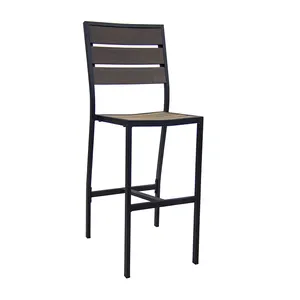





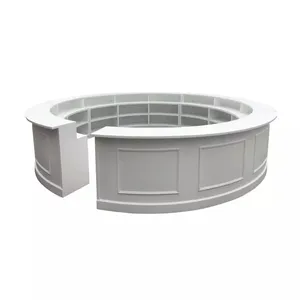


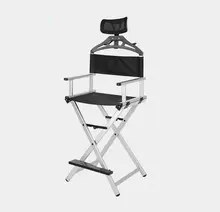








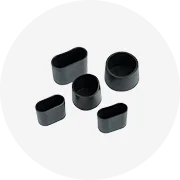



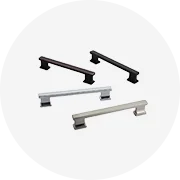
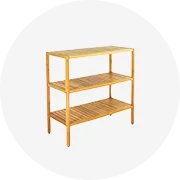

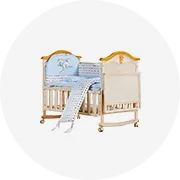








 浙公网安备 33010002000092号
浙公网安备 33010002000092号 浙B2-20120091-4
浙B2-20120091-4